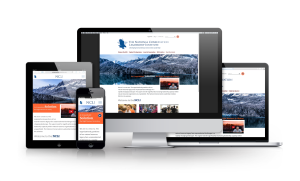As you begin any design project, whether it be a simple brochure or a trade show booth, it can be helpful to keep in mind this quote from Benjamin Franklin:
“If you fail to plan, you are planning to fail.”
Ensuring a successful project that is delivered on time and on budget requires being proactive and making a plan. As a senior designer and project manager at Dever Designs with experience handling a wide variety of projects, I’ve outlined some tips below to help you stay on track.
The Early Bird Gets the Worm
It’s best to involve your design firm as early as possible. Keep in mind that the time needed for planning, design, and production is directly related to the scope of the project. Designing a single brochure can have a fairly quick turnaround, whereas developing branding and exhibit pieces for a large conference could take over a year. So start the conversation with your design firm in advance so that they can help you outline, conceive and manage the project.
Outline the Parameters of Your Project Up Front
We try to make sure we slow a client down and help them to define the project parameters up front. If clients decide to change direction halfway through, it can quickly blow the budget. Because, after all, time is money.
Make Sure All Major Stakeholders are Involved at the Get-Go
A big part of a project’s success lies in making sure all the major stakeholders are involved from the start. Is everyone on board with the project goals? Have all of the major players reviewed and approved the copy? If everyone on the train is not aligned from the start, it can lead to a major project derailment farther down the tracks.
Create a Realistic Timeline
To help keep the project moving along, it’s important to create a realistic timeline that you’ll follow from beginning to end. Inevitably, you’ll run into hiccups along the way, so try to build in a little padding anywhere you can. For example, if the printer needs 10 days to deliver a piece, schedule at least 14 days, just in case it comes down to the wire.
Stop and Think
Your project is going to involve many pieces, and while you don’t have to have the specifics, we help you clarify the project’s parameters and gather all the necessary elements. For example, have you thought about what type of photography and/or illustration will be incorporated? If you are using photos, are they of a high enough quality to translate well to print? If your project incorporates outside advertisers, do they have their artwork prepared and is it usable? It’s good to have as much of this lined up as you can at the start of the project.
Have Regularly Scheduled Updates
It’s important that both the client and the design firm know where they are with the project timeline at all times. To conduct these updates, it’s best to have one point of contact on the design side and one contact on the client side who regularly interact. Ongoing, constant communication will be a key factor in your project’s success.
Interested in talking to Dever Designs about your upcoming project? We have so many more tips and feedback to offer from our decades of experience in the field. Feel free to visit us at deverdesigns.com or call 301-776-2812 to speak with a designer.

